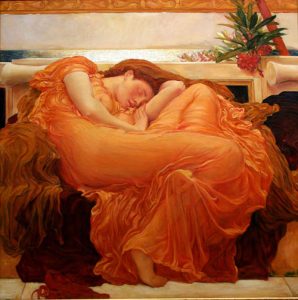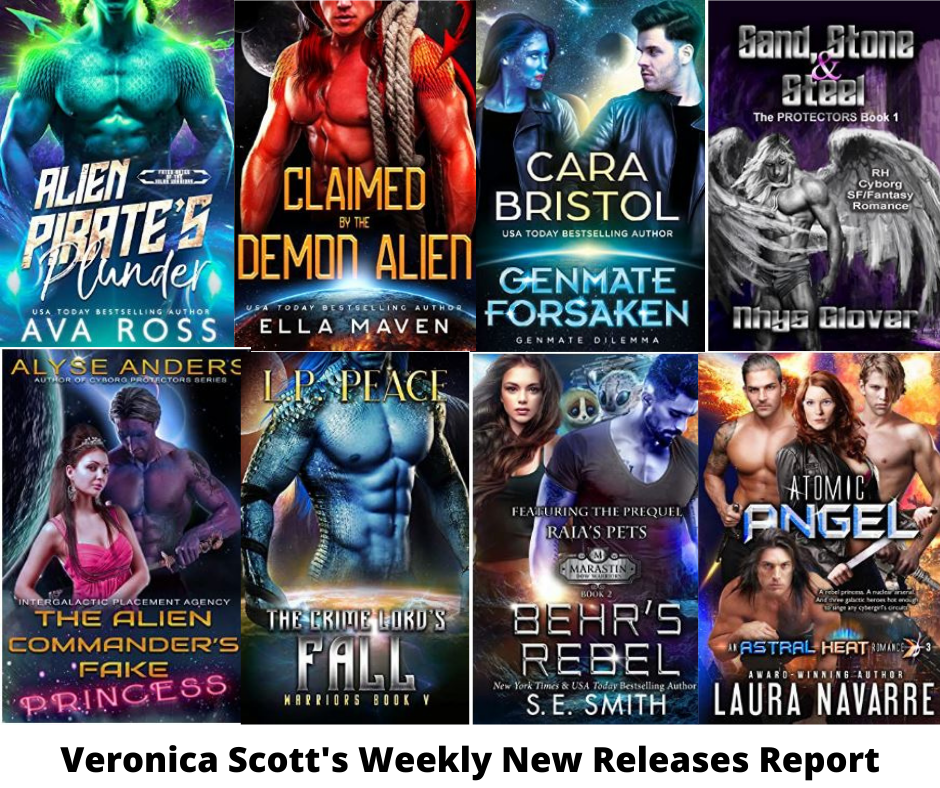When we started framing F/SF calendar pages to hang on our walls in the 1960s (the days before commercial prints or posters were available) original Victorian “fairy paintings” by the likes of Fitzgerald, Cruikshank, Doyle and Dadd (not to mention the Pre-Raphaelites) were unfashionable. Or, perhaps put a better way, given the topic of this post, “undervalued.”
We weren’t aware of that, of course, because we weren’t vacationing in London in our 20s. We were going to Lunacon conventions at the La Guardia Holiday Inn, near the airport on Long Island, and the closest I had ever gotten to art by the wonderful Victorian painter, Sir Lawrence Alma-Tadema, was viewing it in a Museum. [Several years later I also discovered to my dismay that I had been mispronouncing that artist’s name for most of my adult life – which gives you some idea of how far removed I was from art collecting circles, whether the art was in fashion or not 🙂 ]
Nor did we realize, until much later, that in terms of our collecting philosophy, we actually had a lot in common with Sir Andrew Lloyd Webber.
Buy What You Can Afford
That’s the first thing we had in common with Webber, who says (regarding his rationale for collecting Pre-Raphaelites on his website “If I had wanted to spread my collector’s wings wider it would have been difficult; in the early 1970s the Marlborough Gallery offered me Francis Bacon’s Van Gogh in a Landscape for about fifteen times what a well-known colleague of mine had paid another West End dealer for a superb Waterhouse”
In any event, and despite the low esteem in which such paintings were once held, by the time we laid eyes on them in the flesh, so to speak, by way of the Maas Gallery, London, those Pre-Raphaelite paintings (early 70s) were selling for $15,000-$20,000. Beyond our means. By the next visit, we could afford that $20,000 – but they were now $60,000. No sale. The next visit, we said to ourselves, “OK, if it’s just the right picture, a real beauty by Millais or Waterhouse or Alma-Tadema, we’ll go to $60,000. And – you guessed it – by that time they were $150,000 up. The boat had sailed without us. Who knew? Well, for starters, Andrew Lloyd Webber knew. AND had the $20K, the $60K and yes – even the $150K to indulge his tastes, if he wanted to keep buying. A pity, though, he hadn’t the dosh in 1962 when Lord Leighton’s Flaming June surfaced in a framing shop in Lavender Hill, South London after years of obscurity.

The early 60s were a time when paintings by artists like Leighton and Alma-Tadema were often sold just for the value of their frames. Indeed, he tells the story that he spotted “Flaming June” at the age of 14, and couldn’t get his father to lend him the £50 it would have taken, at the time, to buy it (the frame was being offered for £65!) After changing hands a couple of times it was sold on to art dealer Jeremy Maas (see Maas Gallery above) for £1000, who asked £10,000 for it . . . and got it. see here.
The Pre-Raphaelites eventually became the collecting passion of Lloyd Webber, who even as a teen had learned that “the easiest way to get a rise at one of his parents’ dinner parties was to express his admiration for (it)” i.e., art that nobody respected. And then when he could afford to buy it, did so – “ahead of the curve.” “In polite company there was nothing that was deemed to be more irrelevant or gauche in the 1960s than the lush detail and intense colours of Rossetti, Millais, Holman Hunt and the rest of the Pre-Raphaelite Brotherhood.” [“Andrew Lloyd Webber: A Passsion for the Pre-Raphaelites” www.thesundaytimesl.co.uk May 1, 2011]
Which brings us to a second thing we had in common with Webber: we too were attracted to a kind of popular art, that had also been excluded from the art world. And acted on that attraction 🙂
In other words, it was at that point when the supply was growing shorter and prices markedly higher on the kind of art we liked but couldn’t afford, now that someone wanted it….that we realized there was another kind of art to love, which we COULD afford….and that nobody wanted. Other collectors came up with their own solution: comics and comic art, animation art, Pin-ups. We chose science fiction and fantasy illustration.
The Cost of Collecting Ahead of the Curve
To be ahead of the curve, we could have (should have?) chosen comics. For example, Action Comics #1 – now considered the most valuable of comics (the first appearance of Superman, among other characters) –

This comic “first created a stir when an obscure collector brought it to public attention by consigning it to auction at Sotheby’s in 1992” where it sold for a then-record $82,500. Nicolas Cage (actor) then bought it in 1997 for about $150,000 – and later (after it was stolen and subsequently found) sold it for $2.1 million in 2011. [www.hollywoodreporter.com, 11/30/2011]
Or….We could have (should have?) bought Pin-Up Art – once selling for a song, and now selling for well over $100,000. We – even now – could be buying Animation Art, cels from pop culture classics from the 1970s, 1980s and 1990s from Warner Bros, Disney, Hannah Barbera and others. Heritage Auctions are saying “This is a tremendous opportunity for smart collectors to get in on the ground floor of a resurgence of the category.” (my italics for emphasis). Because, as Heritage notes, “Animation art saw a surge in popularity and prices in the 1980s and 1990s before summarily dropping off the radar of major collectors.” [see their online magazine https://www.finebooksmagazine.com/press/2013/02/heritages-inaugural-animation-art-auction.phtml] UH-OH. So maybe it’s too late to jump in? or am I in time for the next curve? 🙂
I don’t think so. We chose SF/F illustration. And stuck to it. And while it has not shown the tremendous leaps in market value at the price points that other collectibles have enjoyed, which was the “opportunity cost” we pay for choosing the wrong curve (on one dimension: financial gain) we can’t complain. There have been several pieces that have increased in value by the same factor (15 times what was paid) as Action #1….just not at the millions’ mark. Because, and like animation cels, the landscape for collecting illustration art has changed in radical ways. Just as animation became almost completely digital around the turn of the 20th century, which is what is fueling its “resurgence”…..so did the last adult literary market for painted illustration – science fiction and fantasy. Hand-painted art became the exception, not the rule – while new collectors were entering the field, who could afford to buy what they wanted, and what they wanted was the imagery found on books they read in their youth.
Neighbors might have scoffed, friends might have been perplexed, but we bought what our hearts and heads directed us to buy: art that seemed damned good, for the price we could afford. Any collector who buys that way, and not with the expectation of making a profit, can find themselves ahead of the curve.










